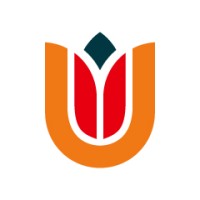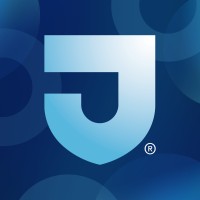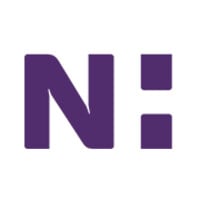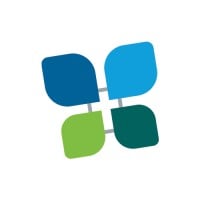
Michigan Medicine Company Cyber Security Posture
uofmhealth.orgMichigan Medicine, based in Ann Arbor, Michigan, is part of one of the world’s leading universities. Michigan Medicine is a premier, highly ranked academic medical center and award-winning health care system with state-of-the-art facilities. Our vision is to create the future of health care through scientific discovery, innovations in education, and the most effective and compassionate care. We want to be the leader in health care, health care reform, and biomedical innovation. Michigan Medicine includes the U-M Hospitals and Health Centers; the U-M Medical School and its Faculty Group Practice; one of the nation's largest biomedical research communities; and education programs that train thousands of future health professionals and scientists each year. We were formerly known as the University of Michigan Medical Center; today that term applies generally to the collection of buildings on our main medical campus in Ann Arbor. We have a close partnership with the U-M School of Nursing and other health sciences schools at U-M. Through the Michigan Health Corporation, we are able to form partnerships outside of our University.
Michigan Medicine Company Details
michigan-medicine
13732 employees
95986.0
62
Hospitals and Health Care
uofmhealth.org
149
MIC_1147334
In-progress
Between 700 and 800
This score is AI-generated and less favored by cyber insurers, who prefer the TPRM score.
 Michigan Medicine Global Score
Michigan Medicine Global Score.png)

Michigan Medicine Company Scoring based on AI Models
| Model Name | Date | Description | Current Score Difference | Score |
|---|---|---|---|---|
| AVERAGE-Industry | 03-12-2025 | This score represents the average cybersecurity rating of companies already scanned within the same industry. It provides a benchmark to compare an individual company's security posture against its industry peers. | N/A | Between 700 and 800 |
Michigan Medicine Company Cyber Security News & History
| Entity | Type | Severity | Impact | Seen | Url ID | Details | View |
|---|---|---|---|---|---|---|---|
| Michigan Medicine | Breach | 80 | 4 | 03/2022 | MIC173012522 | Link | |
Rankiteo Explanation : Attack with significant impact with customers data leaksDescription: The patient information of Michigan Medicine was leaked in a data security incident after an employee email account was compromised. A newly-hired employee accessed patients' electronic medical records of about 2,920 patients without any business need. The compromised information included demographic and clinical information such as diagnosis, treatment, and test results. The employee's excess was immediately cut off and further investigation revealed that no information was misused and the employee checked the records out of curiosity. | |||||||
| Michigan Medicine | Cyber Attack | 100 | 5 | 08/2022 | MIC05131122 | Link | |
Rankiteo Explanation : Attack threatening the organization's existenceDescription: Michigan Medicine was targeted in a cyber attack that lured employees to a webpage that got them to enter their login information. Four Michigan Medicine employees entered login information and accepted multifactor authentication prompts which gave attackers to access their email accounts and resulted in a breach. The incident compromised the patients' names, addresses, birth dates, treatment information, medical record numbers, and health insurance information of about 33,850 patients. Michigan Medicine took steps immediately to investigate the matter and implemented additional safeguards to reduce risk to our patients. | |||||||
| Michigan Medicine | Cyber Attack | 25 | 1 | 01/2023 | MIC8259223 | Link | |
Rankiteo Explanation : Attack without any consequencesDescription: Michigan Medicine was targeted in a cyber attack after that experienced intermittent problems with its public websites as a result on a third-party vendor they used to host some of their sites. They worked with the third-party to mitigate it and expect to have sites fully functional as soon as possible. Public websites hosted by a third-party provider are the only websites that have been targeted. All patient information is secure and not included on any of the compromised sites. Michigan Medicine took steps immediately to investigate the matter and implemented additional safeguards to reduce risk to our patients. | |||||||
| Michigan Medicine | Data Leak | 60 | 3 | 08/2019 | MIC4393423 | Link | |
Rankiteo Explanation : Attack with significant impact with internal employee data leaksDescription: Michigan Medicine notified approximately 5,500 patients about a phishing email campaign that have exposed some of their health information. During the campaign, emails containing a malicious link were sent to over 3,200 Michigan Medicine employees. This email was opened by three employees, giving the attacker access to their email accounts. The compromised information includes names, medical record numbers, addresses, dates of birth, diagnostic and treatment information, and health insurance information. As soon as Michigan Medicine learned that the email accounts were compromised, they were disabled so no further access could take place until the passwords were changed. | |||||||
Michigan Medicine Company Subsidiaries

Michigan Medicine, based in Ann Arbor, Michigan, is part of one of the world’s leading universities. Michigan Medicine is a premier, highly ranked academic medical center and award-winning health care system with state-of-the-art facilities. Our vision is to create the future of health care through scientific discovery, innovations in education, and the most effective and compassionate care. We want to be the leader in health care, health care reform, and biomedical innovation. Michigan Medicine includes the U-M Hospitals and Health Centers; the U-M Medical School and its Faculty Group Practice; one of the nation's largest biomedical research communities; and education programs that train thousands of future health professionals and scientists each year. We were formerly known as the University of Michigan Medical Center; today that term applies generally to the collection of buildings on our main medical campus in Ann Arbor. We have a close partnership with the U-M School of Nursing and other health sciences schools at U-M. Through the Michigan Health Corporation, we are able to form partnerships outside of our University.
Access Data Using Our API

Get company history
.png)
Michigan Medicine Cyber Security News
2nd cyberattack in 4 months at Michigan Medicine leaks data of nearly 58,000 patients
Michigan Medicine was hit by a cyberattack in July that compromised the names, medical record numbers and diagnostic information of 57891 ...
Michigan Medicine notifies patients of health information breach
Three Michigan Medicine employee email accounts were compromised due to a cyberattack. The events occurred on May 23 and May 29, 2024. The ...
Protecting your data: recent cyber attacks make security top priority for Michigan hospitals
Hospitals are home to peoples' most personal and sensitive information, making them a popular target for cyber-attacks.
56K Michigan Medicine patients' information potentially exposed in May cyberattacks
Two hacks on May 23 and 29 compromised employee emails, exposing information such as name, addresses, health insurance and diagnoses.
Michigan Medicine reports year's second data breach impacting 57k people
(FOX 2) - For the second time this year, Michigan Medicine is dealing with a leak of sensitive data, notifying tens of thousands of people ...
Michigan Medicine data breach impacted 56953 patients
A cyber attack against Michigan Medicine resulted in the compromise of the personal and health information of approximately 57,000 patients.
Why are cyberattacks increasingly targeting health care?
Targeting health systems has proven to be potentially lucrative for hackers. Their goals: to access sensitive information, disrupt operations, ...
Michigan hospital system struggles with cyberattack as healthcare industry decries ‘Russian’ ransomware
Michigan hospital system struggles with cyberattack as healthcare industry decries 'Russian' ransomware. A prominent healthcare system in ...
McLaren hospitals hampered by 'criminal cyber attack'
McLaren Health Care facilities in Mid-Michigan were slowed this week by what the organization calls a criminal cyber attack to its information technology ...

Michigan Medicine Similar Companies

Amsterdam UMC
At Amsterdam UMC, more than 15,000 professionals strive to provide good and accessible care. For the generations of today and tomorrow. The two medical university centers in Amsterdam, AMC and VUmc, are working together towards a future in which we prevent illnesses and make the best treatment avail

Cencora
Cencora, a company building on the legacy of AmerisourceBergen, is a leading global pharmaceutical solutions organization centered on improving the lives of people and animals around the world. We connect manufacturers, providers, and patients to ensure that anyone can get the therapies they need, w

Jefferson Health
Thomas Jefferson University and Thomas Jefferson University Hospitals are partners in providing excellent clinical and compassionate care for our patients in the Philadelphia region, educating the health professionals of tomorrow in a variety of disciplines and discovering new knowledge that will de

Novant Health
Novant Health is an integrated network of more than 850 locations, including 19 hospitals, more than 700 physician clinics and urgent care centers, outpatient facilities, and imaging and pharmacy services. This network supports a seamless and personalized healthcare experience for communities in Nor

COLISEE
Colisée, Europe's leading provider of care for the elderly, favours a person-centred approach to caring for the elderly, emphasising the importance of listening and respect. Since March 2021, as a company with a mission, Colisée has been committed to promoting quality ageing, based on three pill

AdventHealth
At AdventHealth, Extending the Healing Ministry of Christ is our mission. It calls us to be His hands and feet in helping people feel whole. Our story is one of hope — one that strives to heal and restore the body, mind and spirit. More than 80,000 skilled and compassionate caregivers in physician

Frequently Asked Questions (FAQ) on Cybersecurity Incidents
Michigan Medicine CyberSecurity History Information
Total Incidents: According to Rankiteo, Michigan Medicine has faced 4 incidents in the past.
Incident Types: The types of cybersecurity incidents that have occurred include ['Cyber Attack', 'Data Leak', 'Breach'].
Total Financial Loss: The total financial loss from these incidents is estimated to be {total_financial_loss}.
Cybersecurity Posture: The company's overall cybersecurity posture is described as Michigan Medicine, based in Ann Arbor, Michigan, is part of one of the world’s leading universities. Michigan Medicine is a premier, highly ranked academic medical center and award-winning health care system with state-of-the-art facilities. Our vision is to create the future of health care through scientific discovery, innovations in education, and the most effective and compassionate care. We want to be the leader in health care, health care reform, and biomedical innovation. Michigan Medicine includes the U-M Hospitals and Health Centers; the U-M Medical School and its Faculty Group Practice; one of the nation's largest biomedical research communities; and education programs that train thousands of future health professionals and scientists each year. We were formerly known as the University of Michigan Medical Center; today that term applies generally to the collection of buildings on our main medical campus in Ann Arbor. We have a close partnership with the U-M School of Nursing and other health sciences schools at U-M. Through the Michigan Health Corporation, we are able to form partnerships outside of our University..
Detection and Response: The company detects and responds to cybersecurity incidents through {description_of_detection_and_response_process}.
Incident Details
Incident 1: Ransomware Attack
Title: {Incident_Title}
Description: {Brief_description_of_the_incident}
Date Detected: {Detection_Date}
Date Publicly Disclosed: {Disclosure_Date}
Date Resolved: {Resolution_Date}
Type: {Type_of_Attack}
Attack Vector: {Attack_Vector}
Vulnerability Exploited: {Vulnerability}
Threat Actor: {Threat_Actor}
Motivation: {Motivation}
Incident 2: Data Breach
Title: {Incident_Title}
Description: {Brief_description_of_the_incident}
Date Detected: {Detection_Date}
Date Publicly Disclosed: {Disclosure_Date}
Date Resolved: {Resolution_Date}
Type: {Type_of_Attack}
Attack Vector: {Attack_Vector}
Vulnerability Exploited: {Vulnerability}
Threat Actor: {Threat_Actor}
Motivation: {Motivation}
Common Attack Types: The most common types of attacks the company has faced are ['Cyber Attack'].
Identification of Attack Vectors: The company identifies the attack vectors used in incidents through {description_of_identification_process}.
Impact of the Incidents
Incident 1: Ransomware Attack
Financial Loss: {Financial_Loss}
Data Compromised: {Data_Compromised}
Systems Affected: {Systems_Affected}
Downtime: {Downtime}
Operational Impact: {Operational_Impact}
Conversion Rate Impact: {Conversion_Rate_Impact}
Revenue Loss: {Revenue_Loss}
Customer Complaints: {Customer_Complaints}
Brand Reputation Impact: {Brand_Reputation_Impact}
Legal Liabilities: {Legal_Liabilities}
Identity Theft Risk: {Identity_Theft_Risk}
Payment Information Risk: {Payment_Information_Risk}
Incident 2: Data Breach
Financial Loss: {Financial_Loss}
Data Compromised: {Data_Compromised}
Systems Affected: {Systems_Affected}
Downtime: {Downtime}
Operational Impact: {Operational_Impact}
Conversion Rate Impact: {Conversion_Rate_Impact}
Revenue Loss: {Revenue_Loss}
Customer Complaints: {Customer_Complaints}
Brand Reputation Impact: {Brand_Reputation_Impact}
Legal Liabilities: {Legal_Liabilities}
Identity Theft Risk: {Identity_Theft_Risk}
Payment Information Risk: {Payment_Information_Risk}
Average Financial Loss: The average financial loss per incident is {average_financial_loss}.
Commonly Compromised Data Types: The types of data most commonly compromised in incidents are {list_of_commonly_compromised_data_types}.
Incident 1: Ransomware Attack
Entity Name: {Entity_Name}
Entity Type: {Entity_Type}
Industry: {Industry}
Location: {Location}
Size: {Size}
Customers Affected: {Customers_Affected}
Incident 2: Data Breach
Entity Name: {Entity_Name}
Entity Type: {Entity_Type}
Industry: {Industry}
Location: {Location}
Size: {Size}
Customers Affected: {Customers_Affected}
Response to the Incidents
Incident 1: Ransomware Attack
Incident Response Plan Activated: {Yes/No}
Third Party Assistance: {Yes/No}
Law Enforcement Notified: {Yes/No}
Containment Measures: {Containment_Measures}
Remediation Measures: {Remediation_Measures}
Recovery Measures: {Recovery_Measures}
Communication Strategy: {Communication_Strategy}
Adaptive Behavioral WAF: {Adaptive_Behavioral_WAF}
On-Demand Scrubbing Services: {On_Demand_Scrubbing_Services}
Network Segmentation: {Network_Segmentation}
Enhanced Monitoring: {Enhanced_Monitoring}
Incident 2: Data Breach
Incident Response Plan Activated: {Yes/No}
Third Party Assistance: {Yes/No}
Law Enforcement Notified: {Yes/No}
Containment Measures: {Containment_Measures}
Remediation Measures: {Remediation_Measures}
Recovery Measures: {Recovery_Measures}
Communication Strategy: {Communication_Strategy}
Adaptive Behavioral WAF: {Adaptive_Behavioral_WAF}
On-Demand Scrubbing Services: {On_Demand_Scrubbing_Services}
Network Segmentation: {Network_Segmentation}
Enhanced Monitoring: {Enhanced_Monitoring}
Incident Response Plan: The company's incident response plan is described as {description_of_incident_response_plan}.
Third-Party Assistance: The company involves third-party assistance in incident response through {description_of_third_party_involvement}.
Data Breach Information
Incident 2: Data Breach
Type of Data Compromised: {Type_of_Data}
Number of Records Exposed: {Number_of_Records}
Sensitivity of Data: {Sensitivity_of_Data}
Data Exfiltration: {Yes/No}
Data Encryption: {Yes/No}
File Types Exposed: {File_Types}
Personally Identifiable Information: {Yes/No}
Prevention of Data Exfiltration: The company takes the following measures to prevent data exfiltration: {description_of_prevention_measures}.
Handling of PII Incidents: The company handles incidents involving personally identifiable information (PII) through {description_of_handling_process}.
Ransomware Information
Incident 1: Ransomware Attack
Ransom Demanded: {Ransom_Amount}
Ransom Paid: {Ransom_Paid}
Ransomware Strain: {Ransomware_Strain}
Data Encryption: {Yes/No}
Data Exfiltration: {Yes/No}
Ransom Payment Policy: The company's policy on paying ransoms in ransomware incidents is described as {description_of_ransom_payment_policy}.
Data Recovery from Ransomware: The company recovers data encrypted by ransomware through {description_of_data_recovery_process}.
Regulatory Compliance
Incident 1: Ransomware Attack
Regulations Violated: {Regulations_Violated}
Fines Imposed: {Fines_Imposed}
Legal Actions: {Legal_Actions}
Regulatory Notifications: {Regulatory_Notifications}
Incident 2: Data Breach
Regulations Violated: {Regulations_Violated}
Fines Imposed: {Fines_Imposed}
Legal Actions: {Legal_Actions}
Regulatory Notifications: {Regulatory_Notifications}
Regulatory Frameworks: The company complies with the following regulatory frameworks regarding cybersecurity: {list_of_regulatory_frameworks}.
Ensuring Regulatory Compliance: The company ensures compliance with regulatory requirements through {description_of_compliance_measures}.
Lessons Learned and Recommendations
Incident 1: Ransomware Attack
Lessons Learned: {Lessons_Learned}
Incident 2: Data Breach
Lessons Learned: {Lessons_Learned}
Incident 1: Ransomware Attack
Recommendations: {Recommendations}
Incident 2: Data Breach
Recommendations: {Recommendations}
Key Lessons Learned: The key lessons learned from past incidents are {list_of_key_lessons_learned}.
Implemented Recommendations: The company has implemented the following recommendations to improve cybersecurity: {list_of_implemented_recommendations}.
References
Additional Resources: Stakeholders can find additional resources on cybersecurity best practices at {list_of_additional_resources}.
Investigation Status
Incident 1: Ransomware Attack
Investigation Status: {Investigation_Status}
Incident 2: Data Breach
Investigation Status: {Investigation_Status}
Communication of Investigation Status: The company communicates the status of incident investigations to stakeholders through {description_of_communication_process}.
Stakeholder and Customer Advisories
Incident 1: Ransomware Attack
Stakeholder Advisories: {Stakeholder_Advisories}
Customer Advisories: {Customer_Advisories}
Incident 2: Data Breach
Stakeholder Advisories: {Stakeholder_Advisories}
Customer Advisories: {Customer_Advisories}
Advisories Provided: The company provides the following advisories to stakeholders and customers following an incident: {description_of_advisories_provided}.
Initial Access Broker
Incident 1: Ransomware Attack
Entry Point: {Entry_Point}
Reconnaissance Period: {Reconnaissance_Period}
Backdoors Established: {Backdoors_Established}
High Value Targets: {High_Value_Targets}
Data Sold on Dark Web: {Yes/No}
Incident 2: Data Breach
Entry Point: {Entry_Point}
Reconnaissance Period: {Reconnaissance_Period}
Backdoors Established: {Backdoors_Established}
High Value Targets: {High_Value_Targets}
Data Sold on Dark Web: {Yes/No}
Monitoring and Mitigation of Initial Access Brokers: The company monitors and mitigates the activities of initial access brokers through {description_of_monitoring_and_mitigation_measures}.
Post-Incident Analysis
Incident 1: Ransomware Attack
Root Causes: {Root_Causes}
Corrective Actions: {Corrective_Actions}
Incident 2: Data Breach
Root Causes: {Root_Causes}
Corrective Actions: {Corrective_Actions}
Post-Incident Analysis Process: The company's process for conducting post-incident analysis is described as {description_of_post_incident_analysis_process}.
Corrective Actions Taken: The company has taken the following corrective actions based on post-incident analysis: {list_of_corrective_actions_taken}.
Additional Questions
General Information
Ransom Payment History: The company has {paid/not_paid} ransoms in the past.
Last Ransom Demanded: The amount of the last ransom demanded was {last_ransom_amount}.
Last Attacking Group: The attacking group in the last incident was {last_attacking_group}.
Incident Details
Most Recent Incident Detected: The most recent incident detected was on {most_recent_incident_detected_date}.
Most Recent Incident Publicly Disclosed: The most recent incident publicly disclosed was on {most_recent_incident_publicly_disclosed_date}.
Most Recent Incident Resolved: The most recent incident resolved was on {most_recent_incident_resolved_date}.
Impact of the Incidents
Highest Financial Loss: The highest financial loss from an incident was {highest_financial_loss}.
Most Significant Data Compromised: The most significant data compromised in an incident was {most_significant_data_compromised}.
Most Significant System Affected: The most significant system affected in an incident was {most_significant_system_affected}.
Response to the Incidents
Third-Party Assistance in Most Recent Incident: The third-party assistance involved in the most recent incident was {third_party_assistance_in_most_recent_incident}.
Containment Measures in Most Recent Incident: The containment measures taken in the most recent incident were {containment_measures_in_most_recent_incident}.
Data Breach Information
Most Sensitive Data Compromised: The most sensitive data compromised in a breach was {most_sensitive_data_compromised}.
Number of Records Exposed: The number of records exposed in the most significant breach was {number_of_records_exposed}.
Ransomware Information
Highest Ransom Demanded: The highest ransom demanded in a ransomware incident was {highest_ransom_demanded}.
Highest Ransom Paid: The highest ransom paid in a ransomware incident was {highest_ransom_paid}.
Regulatory Compliance
Highest Fine Imposed: The highest fine imposed for a regulatory violation was {highest_fine_imposed}.
Most Significant Legal Action: The most significant legal action taken for a regulatory violation was {most_significant_legal_action}.
Lessons Learned and Recommendations
Most Significant Lesson Learned: The most significant lesson learned from past incidents was {most_significant_lesson_learned}.
Most Significant Recommendation Implemented: The most significant recommendation implemented to improve cybersecurity was {most_significant_recommendation_implemented}.
References
Most Recent Source: The most recent source of information about an incident is {most_recent_source}.
Most Recent URL for Additional Resources: The most recent URL for additional resources on cybersecurity best practices is {most_recent_url}.
Investigation Status
Current Status of Most Recent Investigation: The current status of the most recent investigation is {current_status_of_most_recent_investigation}.
Stakeholder and Customer Advisories
Most Recent Stakeholder Advisory: The most recent stakeholder advisory issued was {most_recent_stakeholder_advisory}.
Most Recent Customer Advisory: The most recent customer advisory issued was {most_recent_customer_advisory}.
Initial Access Broker
Most Recent Entry Point: The most recent entry point used by an initial access broker was {most_recent_entry_point}.
Most Recent Reconnaissance Period: The most recent reconnaissance period for an incident was {most_recent_reconnaissance_period}.
Post-Incident Analysis
Most Significant Root Cause: The most significant root cause identified in post-incident analysis was {most_significant_root_cause}.
Most Significant Corrective Action: The most significant corrective action taken based on post-incident analysis was {most_significant_corrective_action}.
What Do We Measure?
















Every week, Rankiteo analyzes billions of signals to give organizations a sharper, faster view of emerging risks. With deeper, more actionable intelligence at their fingertips, security teams can outpace threat actors, respond instantly to Zero-Day attacks, and dramatically shrink their risk exposure window.
These are some of the factors we use to calculate the overall score:
Identify exposed access points, detect misconfigured SSL certificates, and uncover vulnerabilities across the network infrastructure.
Gain visibility into the software components used within an organization to detect vulnerabilities, manage risk, and ensure supply chain security.
Monitor and manage all IT assets and their configurations to ensure accurate, real-time visibility across the company's technology environment.
Leverage real-time insights on active threats, malware campaigns, and emerging vulnerabilities to proactively defend against evolving cyberattacks.




